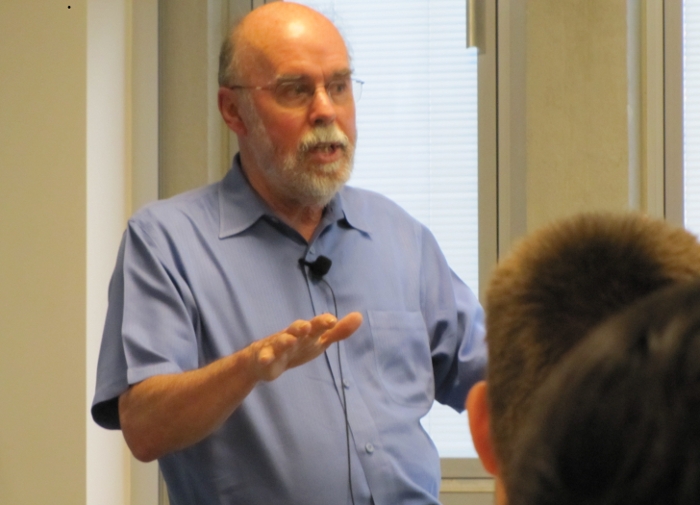NIMBioS Seminar Series
In conjunction with the interdisciplinary activities of the National Institute for Mathematical and Biological Synthesis (NIMBioS), a seminar series on topics in mathematical biology will be hosted at NIMBioS every other Tuesday at 3:30 p.m. (unless otherwise noted). While the Hallam Auditorium, Room 206, is being renovated, seminars will be held in Room 105, Claxton Building, 1122 Volunteer Blvd. Seminar speakers will focus on their research initiatives at the interface of mathematics and many areas of the life sciences. Light refreshments will be served in the 1st floor visitor breakroom beginning 30 minutes before each talk. Faculty and students from across the UT community are welcome to join us.
Time/Date: Tuesday, November 19, 2013, 3:30 p.m.*
Location:
Room 105, Claxton Building, 1122 Volunteer Blvd.
Speaker:
Dr. Roger Nisbet, Ecology, Evolution and Marine Biology, Univ. of California, Santa Barbara, and NIMBioS Postdoctoral Fellow Invited Distinguished Visitor
Topic:
Modeling environmental impacts of engineered nanomaterials: The value of 'generic models' of individual organisms
Abstract: Mathematical models are contributing to synthesis of information on an emerging environmental challenge: to understand the implications of the rapidly growing use of engineered nanomaterials (ENMs). Release of ENMs into soil and water is inevitable, and the ecological consequences are unknown. There is a near limitless combination of ENMs, organisms, and environments of potential importance, but there are limited resources for (expensive) ecological studies. In contrast, there is a large, and growing, body of data on organismal and suborganismal responses to ENMs. Progress in understanding ecological implications of ENMs in the environment requires theory that takes advantage of this knowledge base. I shall describe an approach based on Dynamic Energy Budget (DEB) theory, illustrated by three applications to nanotoxicology: (i) a study of the response of bacteria to quantum dots that illustrates the role in model selection of data on suborganismal dynamics; (ii) a model of phytoplankton populations exposed to silver nanoparticles (AgNPs) that demonstrates the importance of a feedback mechanism involving metabolic "waste" products; (iii) individual based models of the effects of AgNPs on phytoplankton-zooplankton interactions that suggest the concept of ontogenetic asymmetry may help elucidate the population level consequences of impacts mediated by different physiological modes of action.
*Join us for refreshments at 3 p.m. in the 1st floor visitor breakroom.
Seminar Flyer (pdf)
For more information about this and other NIMBioS Seminars, visit /seminars.

NIMBioS
1122 Volunteer Blvd., Suite 106
University of Tennessee
Knoxville,
TN 37996-3410
PH: (865) 974-9334
FAX: (865) 974-9461
Contact NIMBioS



